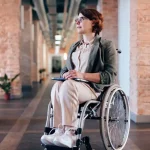Recovering from a stroke is a team effort. If you are a caregiver of a patient recovering from a stroke, or you have had a stroke yourself, the months after you leave the hospital is an important time to get assistance from a professional healthcare team for your rehabilitation.
When recovering from a stroke, you need to first discuss your situation with the discharge nurse at the hospital frankly and realistically.
Can the patient sit in bed and move to a chair with little assistance?
Can the patient speak understandably to communicate needs?
If not, then it may be time for a discharge later.
And, if the patient is discharged from the hospital, where and how will he perform a rehabilitation program ?
Ask the Discharge Planner:
- Would it be best for you and for the patient to go to a rehabilitation facility considering the needs of the patient and the abilities of the caregiver?
- What financial help does the patient have to afford various kinds of care?
- What kind of therapy would the patient need? Physical therapy? Speech therapy?
- Is it possible to travel for outpatient therapy regularly?
- Could visiting healthcare professionals do rehabilitation at the patient’s home?
Be certain the discharge plan is possible, considering your abilities, the patient’s condition, and the environment.
You don’t want to return to the hospital immediately since the plan didn’t work for the patient or you as a caregiver.
The Rehab Team
Can you do rehabilitation at home? You can experience rehabilitation after a stroke at your own home if you have a team of healthcare professionals to assist.
You will need help from a physical therapist, occupational therapist, speech and language therapist, physician, and possibly a social worker.
Modifying your home environment for rehabilitation is easier than you think.
Provide an accessible entrance to your home and a bedroom on the first floor for wheelchair and walker users. You will need access to a nearby bathroom and modify the toilet and tub for safety and accessibility.
It would be good to acquire a portable bedside toilet and place it in the bedroom. Be sure to clear obstacles out of pathways in your home. Ask your therapist to demonstrate how to help the patient into and out of the car.
The Occupational Therapist
Occupational therapists can make a living at home not just possible but enjoyable again after a stroke. An occupational therapist is a professional expert in assessing the patient’s needs and the home environment and in giving caregivers information about making modifications.
Ask the doctor at the hospital to authorize occupational therapy for the patient.
The Physical Therapist
Moving about the home is important in rehabilitating the patient. Does the patient know how to use a walker correctly, especially the brakes?
Has the patient had any training in moving into and out of a wheelchair safely?
How is the patient getting into and out of bed? As a caregiver, how do you help the patient do daily tasks without hurting her back?
This is the area of care that a physical therapist knows very well.
Ask the doctor to authorize visits from a physical therapist so they can assess the patient and the environment and train you and the patient to be safe when moving about the home.
The Speech Therapist
A stroke frequently affects speech, and a speech and language therapist can assist with various speech and vocal exercises, swallowing, and chewing foods and liquids.
Not being able to communicate clearly is frustrating for the patient, and it helps the patient’s self-esteem and sociability improve in speech fluency.
Having impaired chewing is another possible embarrassment for a patient. A speech and language therapist can do therapy in the home and refer you to other care available in the community.
Caregivers must practice good listening and patience while the patient attempts to improve in these areas. Again the doctor will need to authorize speech therapy for the patient.
The Social Worker
A social worker on your rehabilitation team can be a source of information and encouragement for you and the patient.
The social worker will be informed about local resources for durable medical equipment, home healthcare agencies, in-patient and outpatient rehabilitation facilities in your area, and handling the financial costs of care.
When you, as a caregiver, are distressed and troubled about your responsibilities, a social worker can be your counselor and can refer you to support groups and give the advice to help.
So, before the patient is discharged from the hospital after a stroke, call for a team of professionals to back you up and support the patient in this very important time.
Rehabilitation takes a team, and the benefits for the patient are remarkable. As a caregiver, you will also benefit from the support of professionals who can offer valuable advice and help at home or wherever the patient is being rehabilitated.
In conclusion,
Recovering from a stroke is nobody’s walk in the park. It requires a coordinated team effort with a multi-faceted rehabilitation plan.
Physical therapists, occupational therapists, speech therapists, and caregivers are all essential rehabilitation team members.
It is essential to touch base with your hospital’s discharge nurse and work with the discharge planner to determine the best type of rehab facility and therapy for you or your loved one.
You may also need home modifications to provide a safe and comfortable environment. Caregivers step up during recovery by providing day-to-day assistance and being patient listeners.
With the right combination of medical professionals and support at home, it is possible to make significant strides toward improved health after a stroke.

